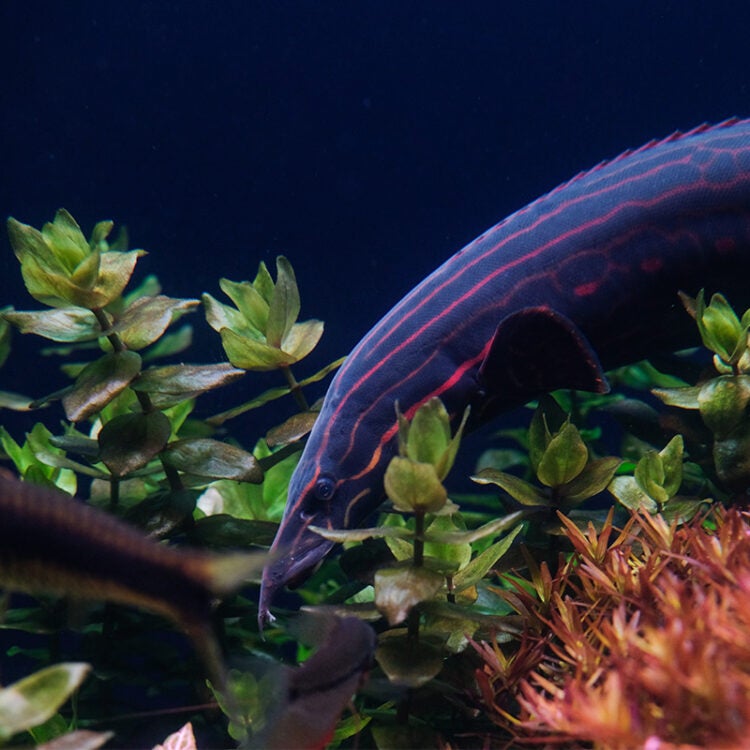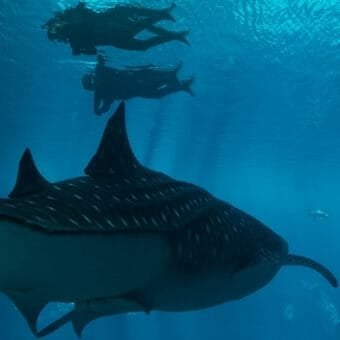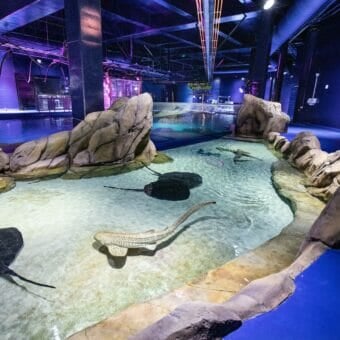-
Size
Up to 40 inches (102 cm) -
Diet
Omnivorous benthic feeder -
Range
Asia -
Habitat
Sluggish lowland waters
Physical Characteristics
- Maximum length of 40 inches (102 cm).
- Narrow, pointed snout; the head is triangular in shape and gradually widens into a streamlined body with small pectoral fins towards the front portion. The body ends in a thin paddle-like tail.
- Head, body and tail are black in coloration but may appear green or blue depending on the lighting.
- The head and back portion of the body are streaked with red and black horizontal bands. The Middle section of the body has prominent red spots or elongated marks.
Animal Fact
The fire eel externally fertilizes its eggs.
Diet / Feeding
- Omnivorous benthic feeder.
- Diet consists of insect larva, worms, small fish and some plant material.
Range / Habitat
- Occurs in freshwater environments in parts of Asia, including Thailand, Cambodia and Vietnam through Malaysia and Indonesia.
- Inhabits sluggish lowland waters including slow-moving rivers and floodplains.
Reproduction & Growth
- Dioecious; externally fertilizes eggs.
- Does not display egg-guarding behavior.
Conservation Status
- “Least Concern” on the IUCN Red List.
Additional Information
- Member of the spiny eel (Mastacembelidae) family. This family of eels is named for the spines running along the back. These spines, however, are not harmful to humans.






